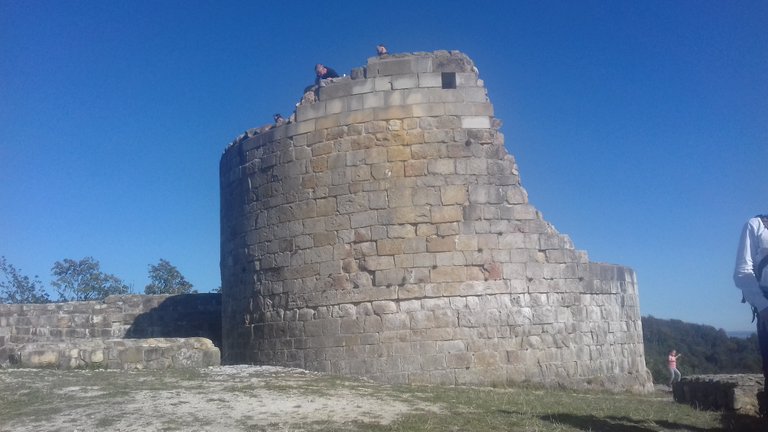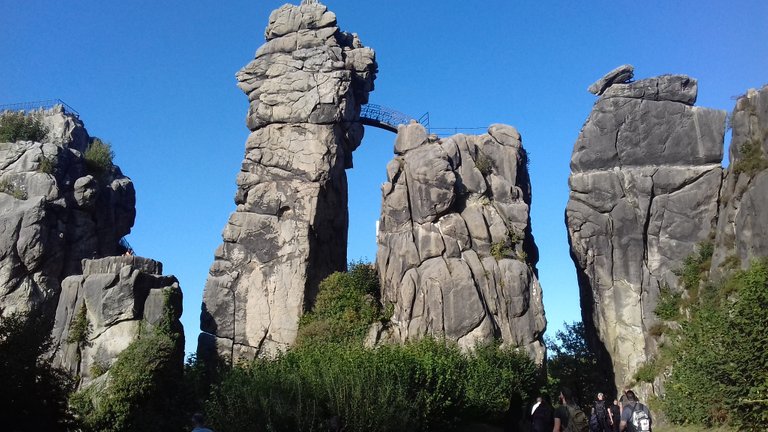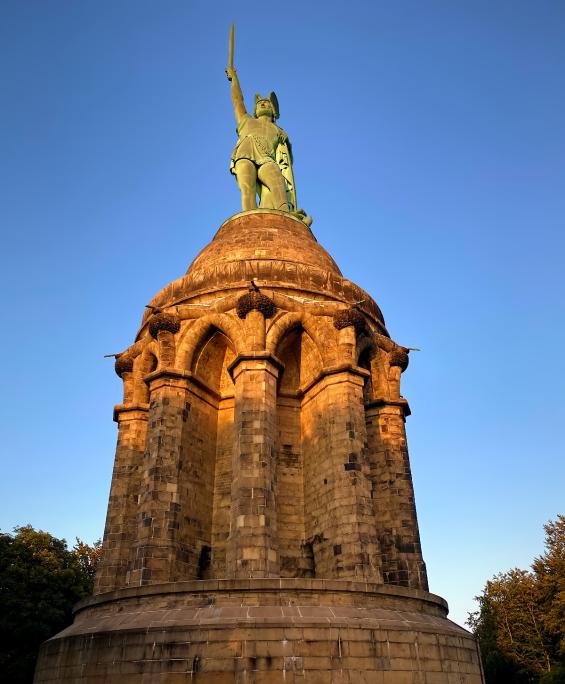Now I have received a part of the pictures, so that I can now present you the answer here:

The photo was taken at the top of Falkenburg Castle in the Teutoburg Forest, a ruin in Detmold-Berlebeck that was once one of the largest medieval dynastic castles in Westphalia.
The former hilltop castle was built from around 1190 - at the instigation of Bernhard II and his son Hermann II, Edelherren zur Lippe - and abandoned in the first half of the 16th century.

Even more known to many, the Externsteine might be.
The thirteen grey, fissured rocks of chalk sandstone (more precisely: Osning sandstone), which jut out in the eastern Teutoburg Forest up to 35 m high, were formed about 130 million years ago.
As a result of shifts in the earth's crust, which exerted enormous pressure on the sandstone layers about 80 million years ago, they gradually became vertical.
The spring streams washed the mountain range out over millions of years, leaving the Externsteine as an isolated group. The glacial ice of the ice ages also formed the rocks.

For some it is a mythical place of power, for others simply an impressive natural monument.
Today it is one of the most famous natural and cultural monuments in Germany.
Unfortunately it was not possible for us to enter the sun gate...

Not far away, you will find the Hermannsdenkmal - here in the beautiful sunset of the leaning sun.
On the mountain called "Grotenburg" near Detmold there is an old Germanic rampart castle, the "großer Hünenring", with a 500 m long and 400 m wide plateau.
The plan to erect a monument to the Cheruscan prince at this site, visible from afar, goes back to Ernst von Bandel, born on May 17, 1800 as the son of a Prussian government inspector in Ansbach, died on September 25, 1876 in Donauwörth. He was buried in Hannover at the Engesohde municipal cemetery.
Bandel, who worked as a sculptor and architect in Hanover and Berlin for many years, held on to his life's goal, the erection of the Armindenkmal, sacrificing his entire private fortune. Unwaveringly, he overcame the many resistances that repeatedly opposed his work.
Bandel had started with the construction work on the mountain he had chosen in 1838, but only 37 years later, in summer 1875, he completed his monument.
The artist lived constantly on "his mountain" during the last years of the construction work, in a simple log cabin, the "Bandelhütte".> quota
(Source: https://www.hermannsdenkmal.de/wissenswertes/entstehungsgeschichte/)
Arminius (German: Hermann) was a prince of the Cherusci, who taught the Romans one of their most devastating defeats in the Battle of Varus in 9 AD by destroying three legions. Marked by Tacitus as the "liberator of Germania".
I enjoyed the excursion very much.
We had a picnic and the children we had with us on our hike kept me on my toes - better than some fitness centers ;) .
I would have liked to visit the Wewelsburg, too, if I had such a long journey, but it will have to wait for my next visit, whenever that is.
The day ended much too fast... a pity^^.
I hope you like such reports.